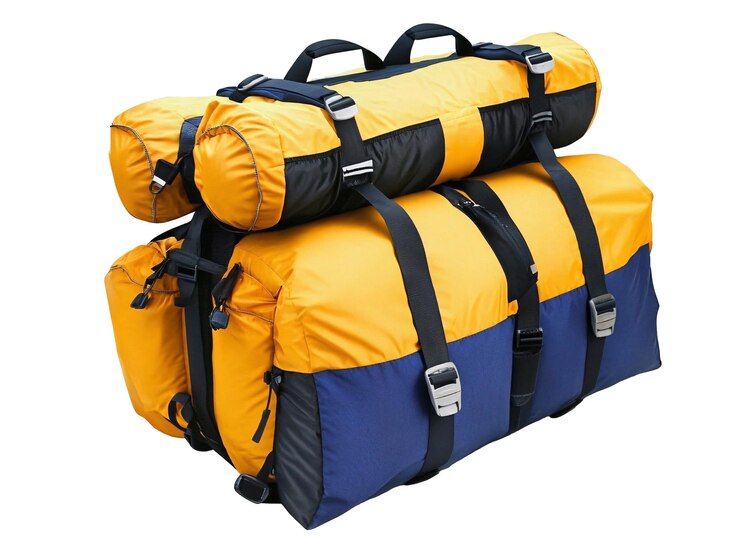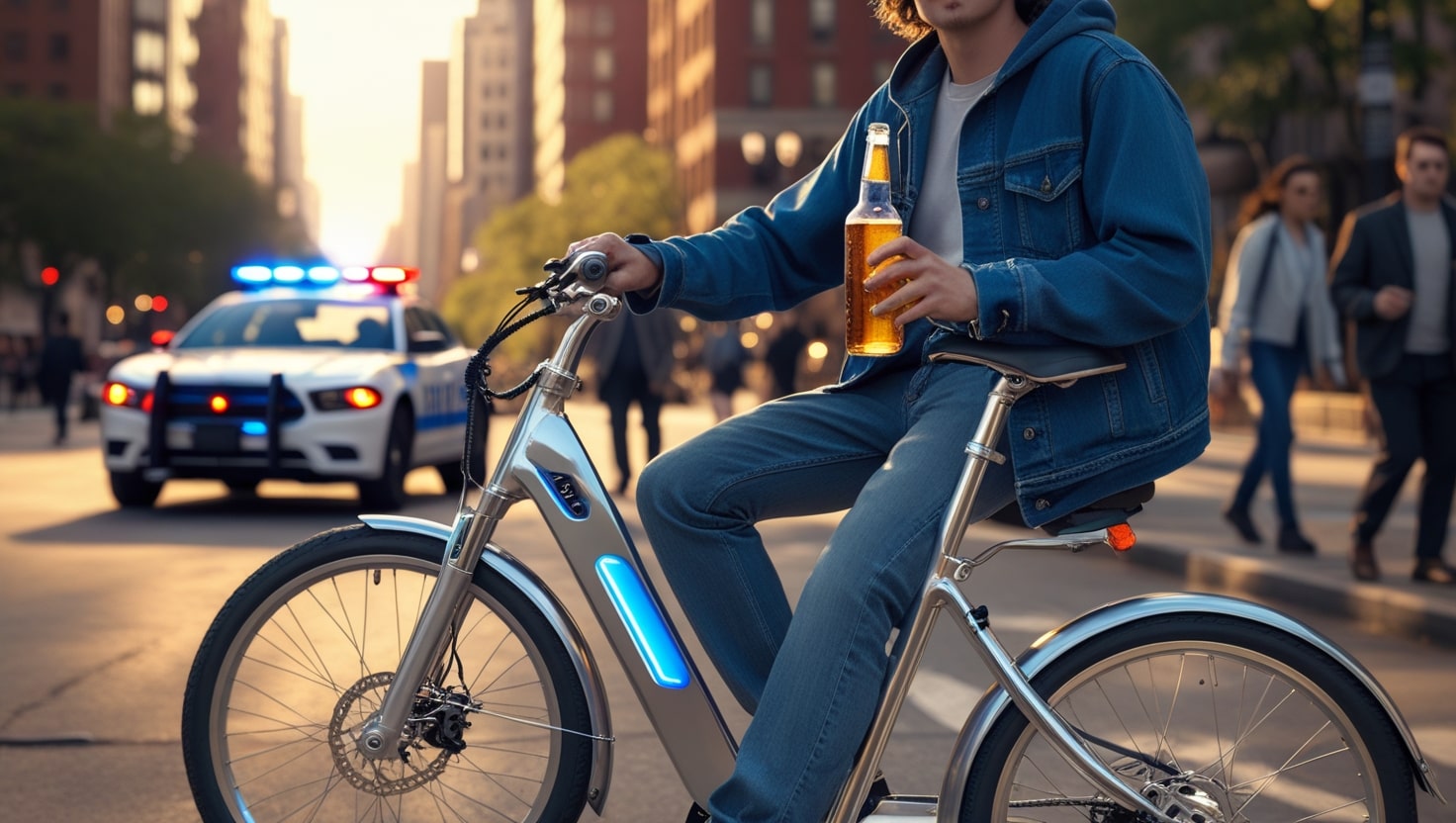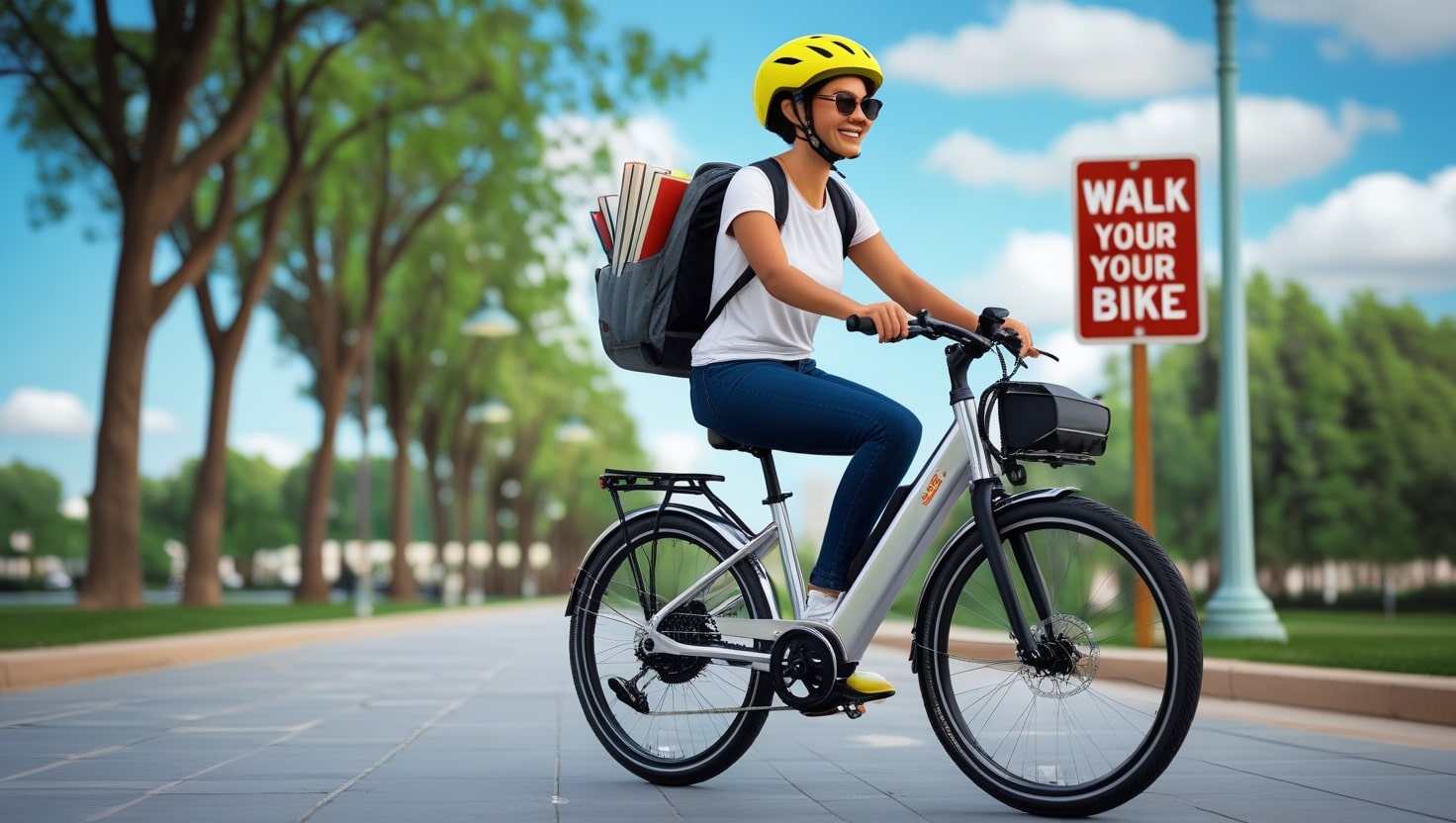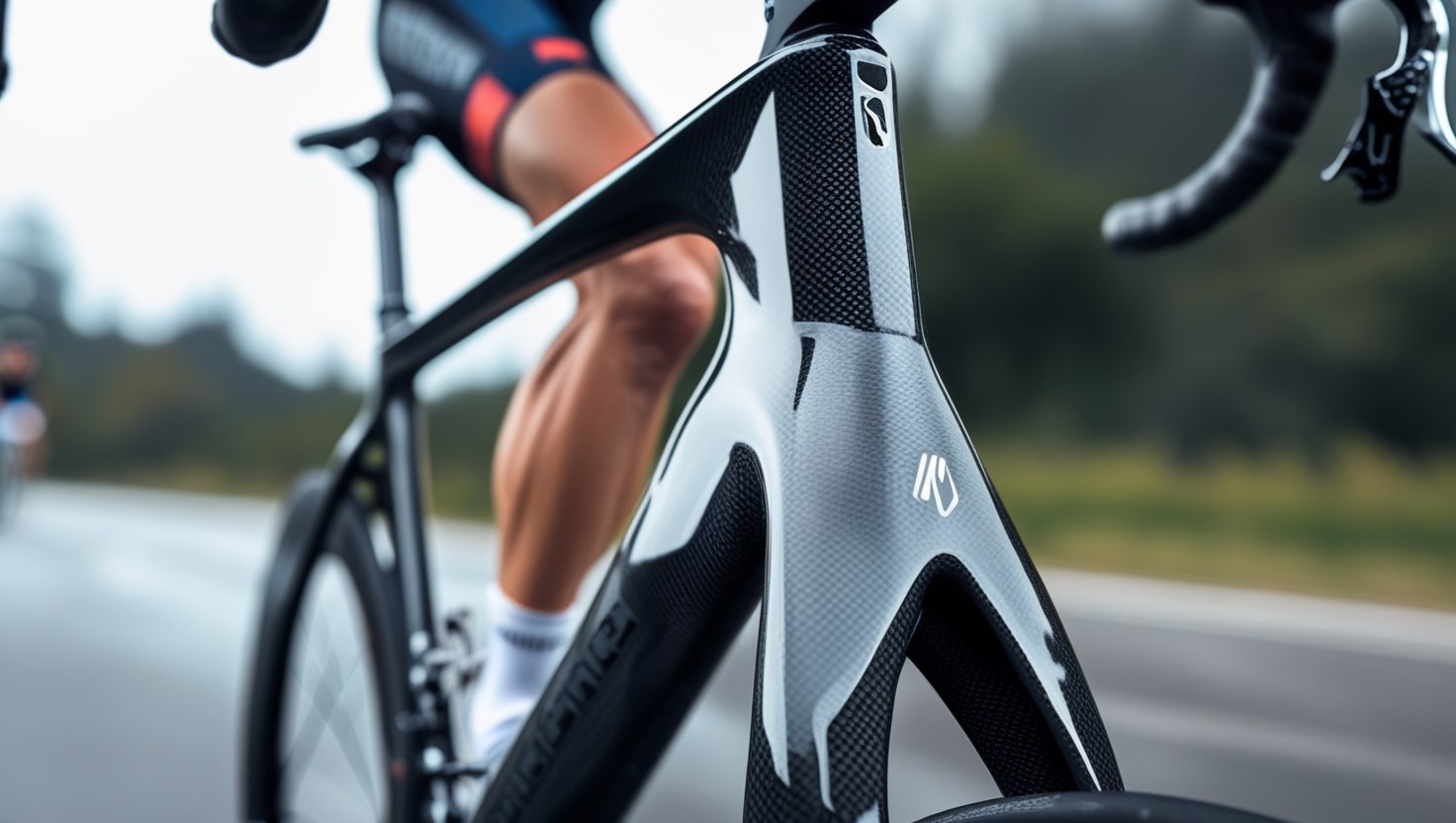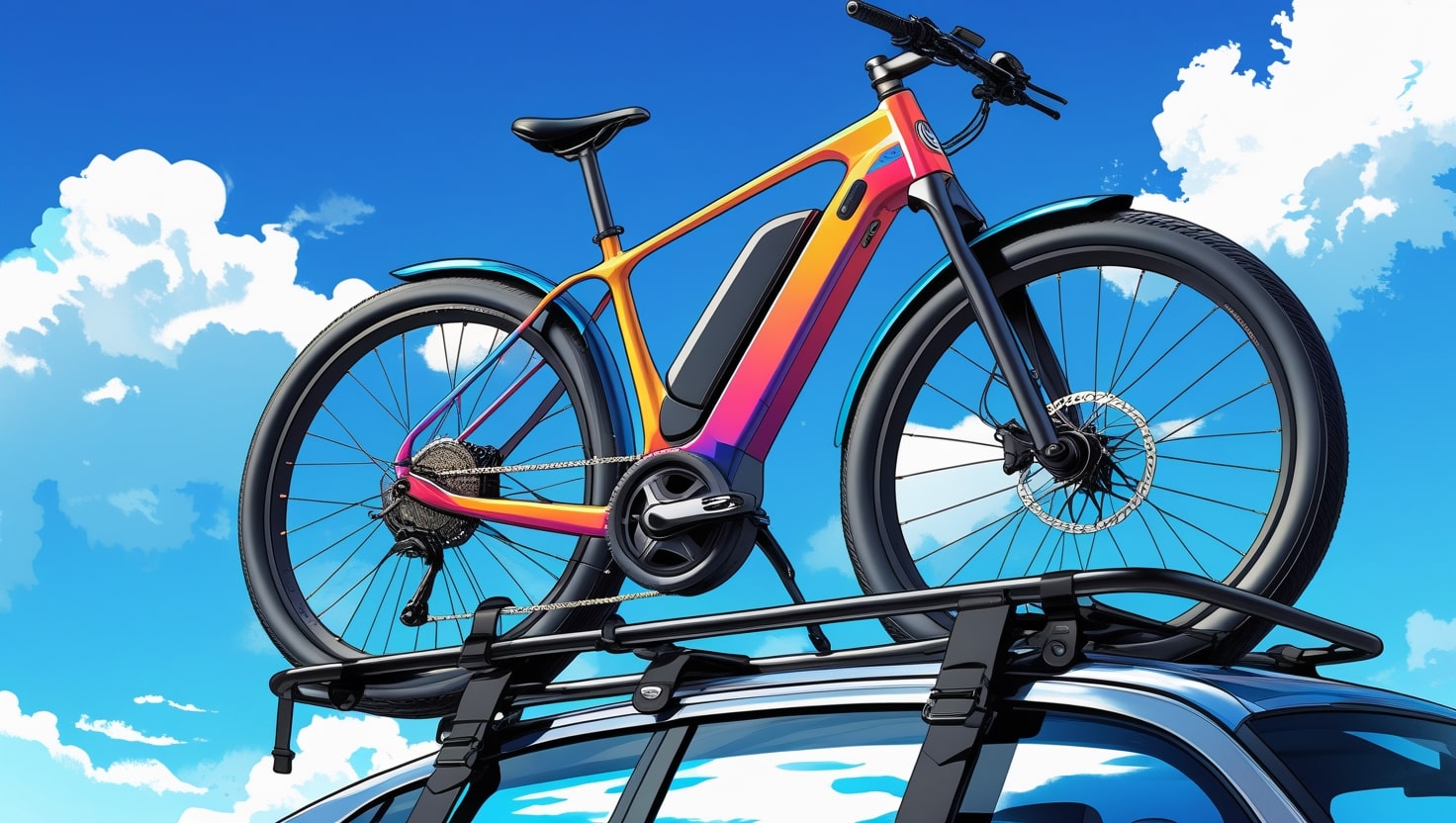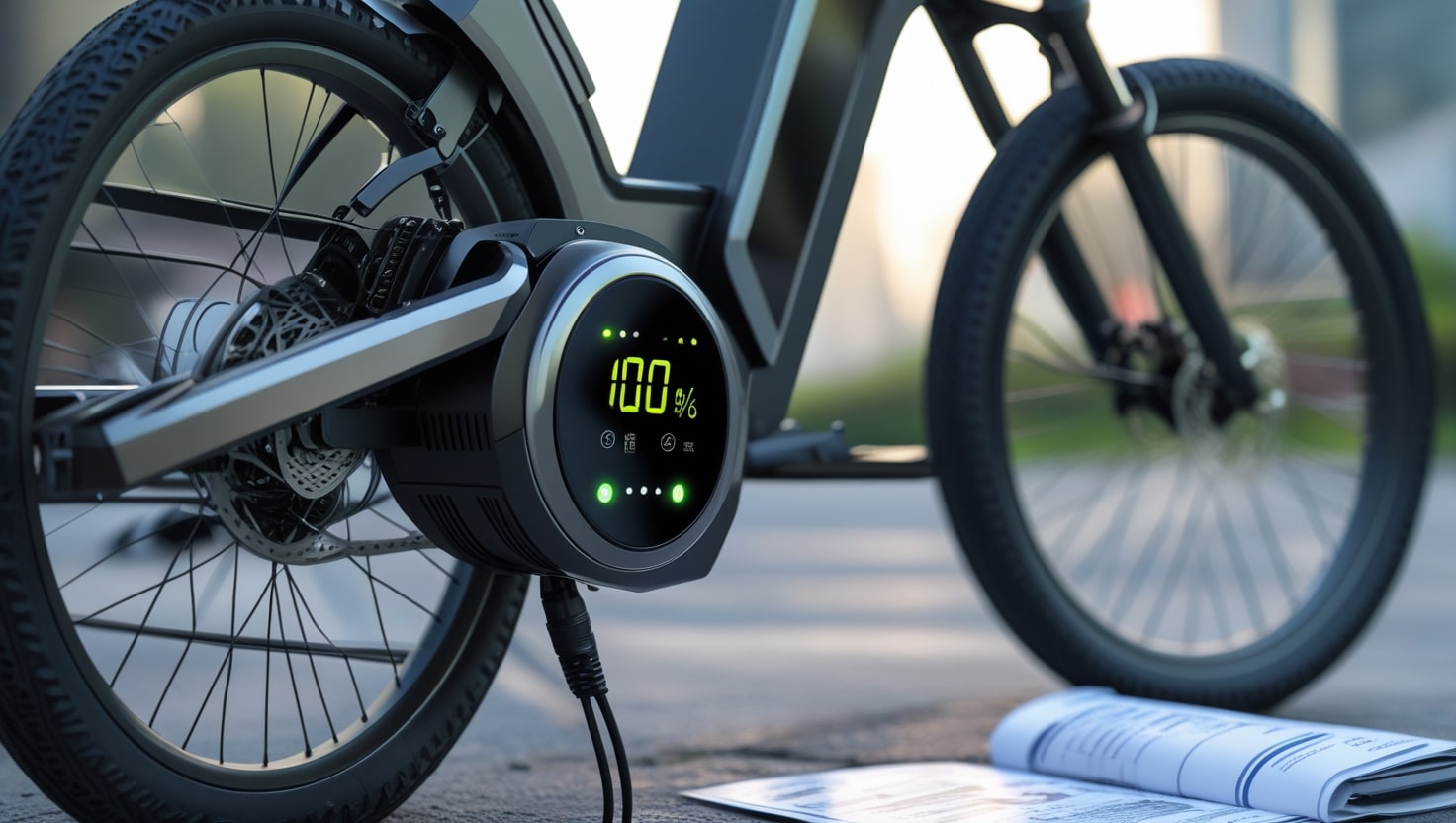When you’re bikepacking through remote terrain, whether climbing steep mountain passes or gliding along scenic routes in Africa, choosing the best sleeping bag for bikepacking can make or break your trip. On one of my recent tours, the challenge wasn’t just in the ride—it was in the setup.
With gear packed into panniers, saddlebags, and fork-mounted cages, every inch of space mattered. That’s why I paid close attention to what I carried, ensuring my sleeping pad, tent, and bags were both light and compact. A good sleeping system isn’t just about comfort—it’s about surviving long stretches off-grid while maintaining enough energy to explore the route ahead.
On one touring adventure across eastern Africa, I used the Big Agnes Q-Core Superlight—a pad that stows neatly in fork cages and offers incredible comfort without adding bulk. It’s one of those pieces of gear that proves itself through every trial and ride.
The Q-Core line, in general, balances comfortably with packability, especially when combined with minimal luggage and tight bikepack loads. I’ve come to value this more when taking detours through off-road tracks or during stretches where we relied on public transport or even tried a bit of mountain hitchhiking just to skip long, repetitive roads.
Every review I’ve read or post I’ve written about bike-based adventures has reinforced the importance of thoughtful packing. The nature of cycle touring demands flexible yet dependable gear. Whether you’re weaving through valleys or hopping on a train to skip a dull segment, the right sleeping pads and tents make all the difference.
Tents for Bike Touring, Bikepacking and In Between
When traveling for several months, especially with couples on a long-distance tour, having a spacious, solid tent makes a world of difference. In my opinion, those two-man or two-person tents often turn into a tight squeeze, more like a one-person space once you try to stow your gear inside.
I’ve done some serious comparisons and contrasts over the years, and my reasoning for choosing the right tent always comes back to comfort and function. Close quarters might be bearable for a weekend, but when it’s 90 degrees outside, even the smallest flaw in your setup can become unbearable for two people on the move.
Big Agnes Copper Spur UL3 – Perfect Tent for a Big, Loaded Bike Tour

If you’re planning a fully loaded tour on a bike, especially one that stretches through places like Mexico or Central America, the Big Agnes Copper Spur UL3 stands out as a popular option. I’ve used this tent on one of our longer trips, and its lightweight, ultralight feel was a huge plus while still offering a large floor area of 44 sq ft and a vestibule space of 9 sq ft. With a total weight of just 2,128 grams or 4.69 lbs, it fits snugly into a saddle bag and leaves room for other essential gear. The superlight package design is made with thin yet tough materials, built to handle the wear of extended traveling.
What makes this tent special for a couple or two people is its three-person design. Each person gets their own door and vestibule, which makes a huge difference when you’re on the road for a long period. I’ve shared this tent with my partner, and the ability to maintain personal space felt like a luxury, especially when folks are sharing such tight quarters. The pleasant feature of split access really helps avoid bumping around in the dark or trying to maneuver awkwardly in and out.
However, the tent isn’t without a con. The shallow doors and slightly encumbering vestibules can make entry and exit a little tricky. But that’s one of those sacrifices you make for the savings in packing size and weight. I’ve used the Copper Spur UL3 across multiple lines of travel, and it consistently served me well—even when the terrain got tough.
Big Agnes Fly Creek UL3 – Solid Tent for Lightweight Adventure Cycling
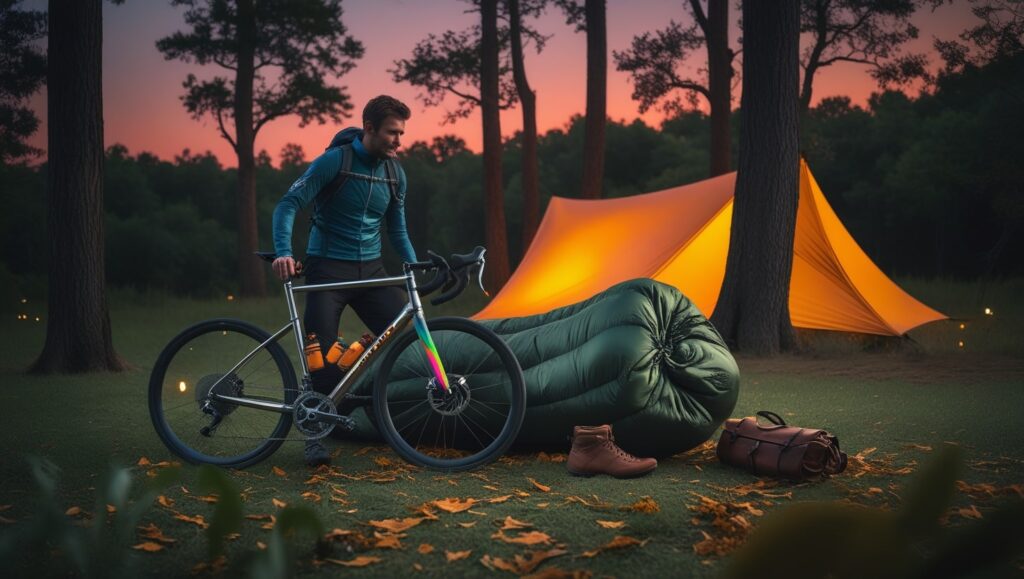
When it comes to choosing a tent for a lean and mobile bikepacking setup, the Fly Creek UL3 makes a strong case. Weighing just 3.66 lbs (1662 grams) and packing down to a tight 6″ x 19″, it offers a spacious interior of 39 sq ft and a 12.5 sq ft vestibule, ideal for storing muddy boots or damp gear. I was immediately impressed by the clip system and how the rainfly could be staked out cleanly to create a gap between the tent body and the fly—this kind of smart layout helps prevent water from wicking through the mesh, which was a persistent issue with the Copper Spur on rainy occasions.
Inside, the inner chambers don’t feel cramped, despite their not-so-vast reputation. The steep sidewalls and a front door design make getting in and out smoother, though the door isn’t as wide as others. Still, I appreciated the way the neutral color and subtle orange trim allowed the tent to blend into the surroundings when wild camping—a detail that matters more than you’d think.
I spent a lot of time putting the UL2+, the Slater, and this one next to each other to see which was the best. In the end, I chose the Fly Creek. Though the fly can feel brushed against in high winds and might require a thoughtful setup, the trade-offs are worth it.
Big Agnes Slater UL2+ – Great Minimalist Shelter for Bikepacking
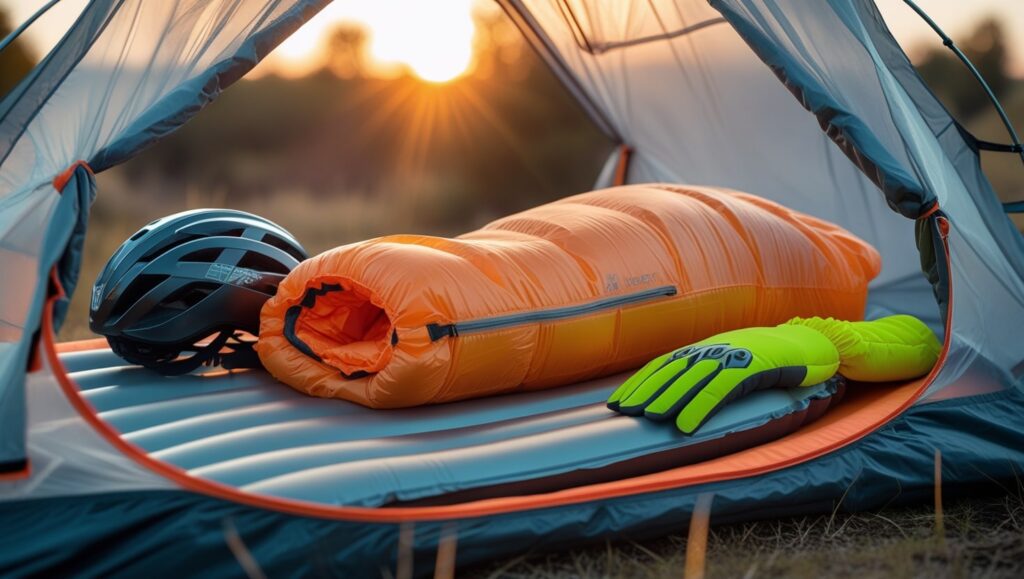
For short trips or fast escapes on a full-suspension rig, the Slater UL2+ is a smart minimal choice. Weighing just 3 lbs (1361 grams) and packing down to a slim 5″ x 18″, it offers 37 sq ft of interior space and an 8 sq ft rain fly vestibule—ideal for stowing gear in unexpected rainfall. This two-part shelter really shines when keeping weight down is the priority. It’s a great fit for bikepacking, though on my Africa trip, I hesitated bringing it due to its low sidewalls and how constricted it can feel over longer months. Still, for a few nights, it’s a solid option.
The Slater line makes some clever choices. Instead of using a lot of mesh on the main tent body, it’s built with thin ripstop nylon, which adds warmth and makes it a reliable 3+ season tent. I’ve used it in sub-freezing temps, and although not thoroughly tested in alpine environments, it seems tougher than most ultralights. I plan to take it out again this weekend to see how it holds up under quick setups on rough terrain. The fast-fly or tarp option is tempting, but with bugs or poor weather, the tent wins every time.
One potential con is that it requires stakes for setup, which becomes tricky on concrete pads—a real thing I faced in Central America. Also, the orange rain fly might draw attention when wild camping, though that’s a tradeoff depending on where you’re pitched.
Related: 10 Essential Tools for a Bike Ride
Two Ultralight Down Sleeping bags for Bikepacking or Bike Touring
On our recent trip to Africa in December, I took the Pitchpine while Gin, who’s more cold-natured, went with the Lost Lake. Both sleeping bags from Big Agnes are filled with down, pack incredibly small, and weigh super light, which makes them ideal for bikepacking or minimalist touring. After several nights on the trail, I was honestly impressed by how warm and compact these bags were—even in colder conditions.
Big Agnes Pitchpine UL 45
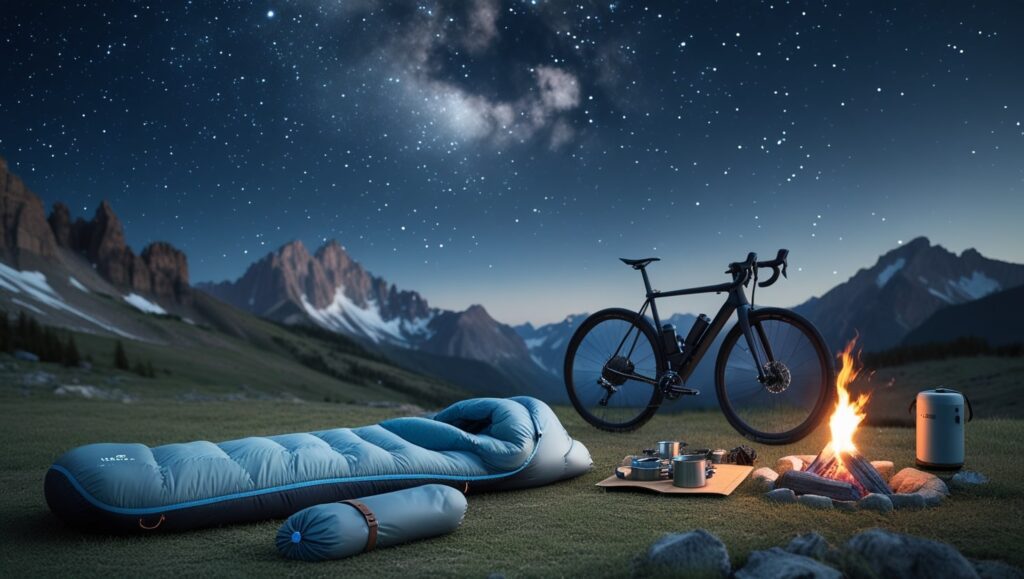
The Big Agnes Pitchpine is my go-to sleeping bag for warm-weather bikepacking and multi-week tour rides in moderate climates. Weighing only 567 grams (20 oz), this 45 degree model packs into a compact 6″ x 15″ stuff sack, or can be compressed even smaller into a 5L dry bag—perfect for strapping to a fork-mount or Anything cage. I used it across Central America, from 40–80 degrees, and while there were hot nights that felt a little sticky, the bag still performed well.
What sets it apart is how well it’s designed to fit a sleeping pad thanks to a smart sleeve on the bottom-side. It skips traditional insulation underneath, letting the R-factor of your pad do the work. This allowed Big Agnes to give it a roomy 72.5″ girth in the shoulder, so you don’t feel trapped like in a tight mummy style bag. The wide shape makes sleep more relaxed, and although it lacks a hood, the design makes sense for weather that doesn’t dip too low. It’s a great pick for three seasons, just not for winter.
On a couple nights, I did feel a bit chilled when temps dropped freezing, even with a wool under layer, but that’s expected from a bag built for lighter heat. The pad stayed in place and didn’t slide out, which is always a win on uneven ground.
Related: Fiido X Folding Electric Bike Review
Big Agnes Lost Lake SL 30
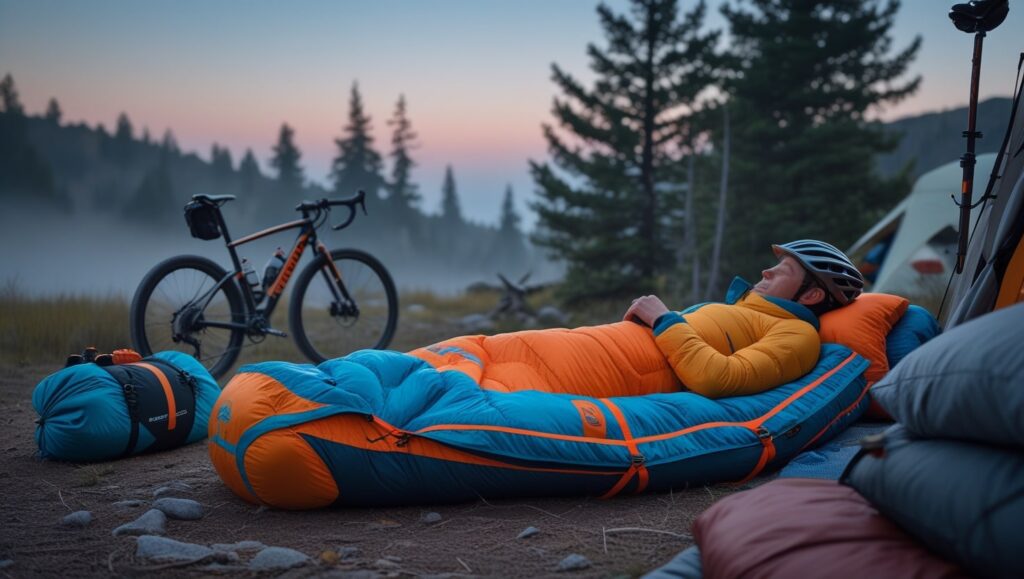
The Lost Lake SL from Big Agnes is a great sleeping bag choice when you’re facing cooler nights on a bikepacking trip. With a 30 degree rating, this model weighs just 850 grams (30 oz) and offers solid performance without being too heavier than others in its category or price range. While there are lighter bags out there, the old-school design paired with new school tech—like the full-length zipper and proprietary DownTek—adds smart value. DownTek is designed to resist moisture, so even in damp or wet conditions, the stuffing stays drier than traditional down. My wife, who is cold natured when sleeping, felt toasty and comfortable even when temps neared freezing during a recent night in Vermont.
What impressed me most was how well this bag holds heat from head to toe, thanks to its well-placed baffles. It feels just right—not too snug, not too roomy. Although I haven’t tested it in every environment, the bag felt durable and well-built. The 6′ model comes in a stuff sack that measures 8×17.5″. While it doesn’t quite compress into a 5L Sea To Summit River Bag, it still gets small enough to strap onto a fork-mount cage, which is essential for any space-conscious rider.
Another feature worth mentioning is how the bag handles anticipated warmer nights. The nice part about the full-length zipper is that it gives you the flexibility to vent when needed. A wet bag can ruin a ride, but this one holds up well if it does act as claimed.
Related: Do Bikes Have Weight Limits?

